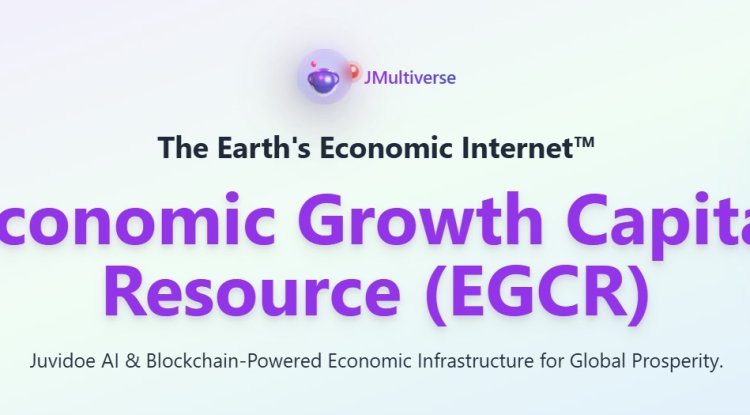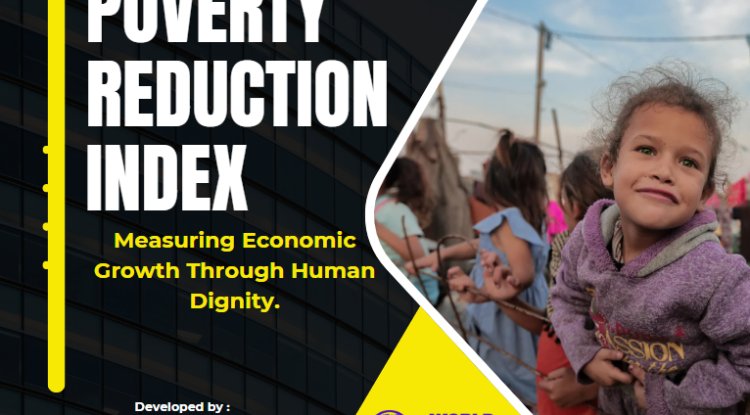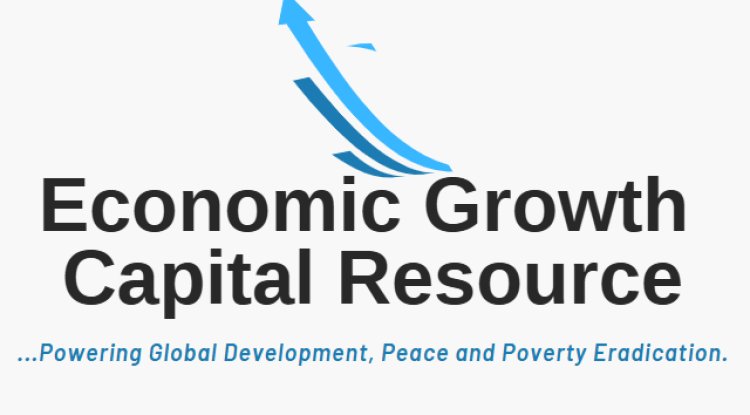STRATEGIES FOR EFFECTIVELY REVERSING INFLATION
Inflation, that formidable economic beast, has long plagued nations, wreaking havoc on economies, destabilizing financial systems, and causing prices to skyrocket. While the effects of inflation are often discussed at a national level, its impact on sub-national areas, such as states, provinces, or regions, is often overlooked. Yet, within the borders of these smaller economic units, inflation's claws dig deep, leaving no corner untouched.

Imagine a picturesque sub-national area amidst rolling hills, bustling cities, and quaint towns. Life seems idyllic, but beneath the surface, the invisible forces of inflation stir, threatening to disrupt the harmony. As prices surge, residents struggle to make ends meet, businesses grapple with rising costs, and the dream of economic stability begins to fade. Within this challenging context, we find ourselves seeking effective strategies to reverse inflation and restore balance to sub-national areas.
So, what exactly is inflation? In simple terms, inflation refers to consistently rising the average prices of goods and services over time. While a moderate level of inflation is generally seen as conducive to economic growth, excessive inflation can have severe repercussions. As prices soar, the purchasing power of individuals diminishes, eroding their ability to afford necessities. The impact extends beyond individuals, affecting businesses, investment decisions, and the overall economic climate.
In sub-national areas, inflation manifests uniquely, bearing its teeth upon the local populace. The cost of living surges from urban centers to rural communities, placing an unbearable burden on residents. Basic commodities become unaffordable luxuries, housing prices skyrocket, and the dreams of homeownership fade into the distance. Once secure in their modest earnings, families struggle to make ends meet, forced to sacrifice their quality of life.
Inflation's wrath falls most on small and medium-sized businesses (SMEs), the backbone of sub-national economies. Businesses are under tremendous pressure to continue operating profitably as the price of raw materials and production inputs rise. When the delicate balance between supply and demand is disturbed, output decreases, layoffs, and even business closures. The dreams and aspirations of countless entrepreneurs become entangled in the webs of inflation, stifling economic growth and development.
Moreover, inflation's ripple effects permeate the financial realm, impacting the lives of high-income earners. While their earnings may be substantial, their ability to accumulate wealth needs to be improved by the devaluation of money. Financial security becomes elusive as their purchasing power erodes, necessitating urgent measures to safeguard their wealth and financial well-being.
The impact of inflation on sub-national areas is not confined to economic spheres alone. It seeps into the fabric of society, affecting social cohesion and exacerbating inequality. As prices surge, the gap between the haves and the have-nots widens, deepening the chasm of economic disparity. The most vulnerable members of society bear the heaviest burdens, caught in a vicious cycle of poverty and economic instability.
In the face of these challenges, policymakers and economic managers are tasked with reversing inflation and revitalizing sub-national economies. This begs the question: How can we effectively combat inflation and restore economic stability to these regions? Within the realm of possibility, through strategic and targeted interventions, sub-national areas can regain their footing and thrive again.
In this chapter, we will explore a range of innovative recommendations designed to tackle inflation head-on. From implementing mandatory reserve requirements for businesses and promoting increased savings for high-income earners to stimulating production and strengthening loan requirements, the aim is to empower policymakers and economic managers with the tools they need to reverse the tide of inflation.
Implementing Mandatory Reserve Requirements for Businesses
In the quest to tame the roaring beast of inflation, policymakers and economic managers must unleash various weapons from their arsenal. One such powerful tool that can effectively curb inflationary pressures and restore economic stability is the implementation of mandatory reserve requirements for businesses. This strategic measure acts as a shield, fortifying economies against the destabilizing forces of inflation and promoting resilience in sub-national areas.
So, what exactly are mandatory reserve requirements?
In essence, they are regulations stipulating that businesses must set aside a certain percentage of their funds as reserves rather than utilizing them for immediate expenditures or investments. These reserves act as a buffer, shielding businesses from sudden shocks and providing a safety net during economic turbulence.
The importance of mandatory reserve requirements lies in their ability to enhance financial stability and foster responsible financial management. Economies can mitigate the risk of excessive spending, speculative practices, and overleveraging by mandating businesses to maintain reserves. This prudent approach helps prevent the build-up of systemic risks and safeguards against potential economic downturns.
Implementing mandatory reserve requirements is a carefully orchestrated process, requiring collaboration between government entities, regulatory bodies, and businesses. The first step involves determining the appropriate reserve ratio—the percentage of funds businesses must set aside. This ratio should strike a balance, ensuring adequate reserves without burdening businesses or stifling economic growth.
Once the reserve ratio is established, businesses are obligated to comply with the new regulations. Clear communication and transparency are key to fostering understanding and buy-in from the business community. Campaigns, workshops, and consultations can demystify the justification for obligatory reserve needs and clarify their advantages for specific enterprises and the overall economy.
To ensure compliance, robust monitoring mechanisms and effective enforcement strategies must be implemented. Regular audits, reporting requirements, and penalties for non-compliance act as deterrents and maintain the system's integrity. Regulatory bodies are crucial in overseeing the implementation process, conducting thorough examinations to ensure businesses adhere to their reserve obligations.
While mandatory reserves may initially appear burdensome to businesses, it is important to highlight the long-term advantages they offer. Building reserves can protect businesses from unforeseen challenges, such as sudden increases in production costs, economic downturns, or supply chain disruptions. Reserves act as a safety valve, allowing businesses to navigate uncertainties with greater confidence and stability.
Moreover, mandatory reserves contribute to the overall health and resilience of the financial system. The risk of bank runs, liquidity crises, and insolvency is mitigated by ensuring businesses have a cushion of funds. This creates a virtuous cycle, where stable businesses contribute to a stable economy, fostering investor confidence and attracting further investment.
It is worth noting that implementing mandatory reserve requirements may pose challenges and necessitate ongoing evaluation and adjustment. Striking the right balance between the reserve ratio and the specific needs of businesses is crucial. Regular reassessments and consultations with stakeholders can fine-tune the requirements and ensure their continued effectiveness in a dynamic economic landscape.
The implementation of mandatory reserve requirements for businesses stands as a powerful tool in the fight against inflation and the promotion of economic stability. By compelling businesses to set aside reserves, economies gain the resilience and safeguarding necessary to weather economic storms. This approach fosters responsible financial management, bolsters confidence in the financial system, and fortifies sub-national areas against the ravages of inflation.
Designing and Implementing an Effective Reserve Requirement System
The architects of the reserve requirement system must determine the appropriate reserve ratio—the percentage of funds businesses must set aside. This delicate balance depends on various factors, including the economy's size, the financial system's stability, and the desired impact on inflation. Striking the right ratio ensures sufficient reserves without imposing excessive burdens on businesses.
Once the reserve ratio is established, the implementation phase commences. Effective communication and transparency are vital during this stage. Businesses need to be informed about the new requirements, the rationale behind them, and the benefits they bring. Clear and concise guidelines must be provided to ensure understanding and compliance. Education campaigns, workshops, and consultations can demystify the system, ensuring businesses are well-equipped to fulfill their obligations.
Building an effective reserve requirement system requires the collaborative efforts of regulatory bodies, government entities, and businesses. Regulatory bodies play a pivotal role in overseeing the system, monitoring compliance, and conducting regular audits. They act as stability custodians, safeguarding the financial system's integrity and maintaining trust among stakeholders.
To facilitate implementation, businesses need practical guidance on calculating and maintaining their reserves. Providing tools, templates, and training materials can ease the compliance burden and foster a smoother transition. Leveraging technology and digital platforms can further streamline the process, making it more efficient and accessible for businesses of all sizes.
A well-designed reserve requirement system also includes mechanisms to address potential challenges and ensure its ongoing effectiveness. Regular evaluations and assessments are crucial to assess the impact of the system and make necessary adjustments. Collaboration with businesses and other stakeholders through consultations and feedback loops helps identify areas for improvement and fine-tune the requirements.
Flexibility is the key to an effective reserve requirement system. Economic conditions, financial risks, and business landscapes evolve over time, requiring adaptations to the system. Policymakers and economic managers must remain vigilant, staying attuned to changes in the economic environment and adjusting the reserve requirements as needed. This proactive approach ensures that the system remains relevant and resilient in the face of dynamic economic realities.
Implementing an effective reserve requirement system is no small feat, but its benefits to sub-national areas are worth the effort. By bolstering financial stability and curbing inflationary pressures, the system protects businesses against economic uncertainties. It fosters confidence in the financial system, attracts investment, and paves the way for sustainable economic growth.
Potential Challenges and Mitigation Strategies
As policymakers and economic managers embark on the journey of implementing mandatory reserve requirements for businesses, they must be prepared to navigate potential challenges that may arise along the way. While this path may be riddled with obstacles, challenges can be overcome with strategic thinking, adaptability, and resilience. Here are the potential challenges and the mitigation strategies that can ensure a successful implementation of the reserve requirement system.
- Resistance and Compliance
One of the primary challenges in implementing mandatory reserve requirements is the potential resistance from businesses. Some may view these requirements as burdensome, impeding their ability to allocate funds for growth or investment. To address this challenge, clear and consistent communication is key. Engaging in constructive dialogue, listening to concerns, and explaining the long-term benefits of reserves can help businesses understand the importance of compliance. Flexibility in the implementation timeline and providing support for compliance procedures can also alleviate the burden on businesses.
2. Monitoring and Enforcement
Monitoring compliance with reserve requirements is vital to ensure the system's effectiveness. However, this task presents challenges regarding resources, expertise, and enforcement. Regulatory bodies must have the necessary tools and expertise to conduct regular audits, track compliance, and identify discrepancies. Collaboration with financial institutions can enhance monitoring capabilities by leveraging their existing infrastructure and systems. Furthermore, appropriate penalties and sanctions for non-compliance should be in place to deter businesses from circumventing the requirements.
3. Economic Fluctuations
Economic conditions are never static, and fluctuations can impact the efficacy of reserve requirements. During periods of economic downturn or financial crises, businesses may struggle to maintain the required reserves, leading to potential liquidity issues. To address this challenge, reserve requirement systems should incorporate built-in flexibility. Allowing for temporary adjustments in reserve ratios during challenging economic times can alleviate the burden on businesses while ensuring the system's stability. Regular evaluations and recalibrations of the reserve requirements based on economic indicators can also help maintain a balance between stability and growth.
4. Unintended Consequences
Introducing mandatory reserve requirements may inadvertently result in unintended consequences. For example, businesses may pass on the reserves' costs to consumers through price increases, leading to higher inflationary pressures. Mitigating this risk requires a comprehensive understanding of the local market dynamics and careful calibration of the reserve ratio. Monitoring and assessing the impact of the system on prices and market competitiveness can help identify and promptly address unintended consequences.
5. Communication and Education
Effective communication and education are crucial to ensuring businesses understand the rationale and benefits of reserve requirements. Language barriers, lack of awareness, and misinformation can hinder the successful implementation of the system. To overcome this challenge, comprehensive and accessible educational campaigns should be conducted, utilizing various channels such as workshops, seminars, and online resources. Collaborating with industry associations, business chambers, and financial institutions can also amplify the reach and effectiveness of educational initiatives.
By acknowledging these potential challenges and implementing mitigation strategies, policymakers, and economic managers can navigate the path toward successfully implementing mandatory reserve requirements for businesses.
Promoting Increased Savings for High-Income Earners
In the vast landscape of economic strategies, a hidden treasure awaits discovery - the potential of high-income earners to reverse the tides of inflation and lead toward stability and prosperity.
High-income earners possess a unique opportunity to reverse inflationary pressures and contribute to economic stability. By fostering a savings culture among high-income earners, we can tap into their financial capacity to fuel our journey toward stability and prosperity.
Financial literacy plays a pivotal role in nurturing a savings culture. Collaboration between educational institutions and community organizations equips high-income earners with the knowledge and skills to make informed financial decisions. Workshops, seminars, and online resources empower them to optimize their savings strategies and explore investment opportunities, positioning them as champions of economic stability.
Policymakers and economic managers can create an environment conducive to increased savings by enacting incentives and tax benefits. Such measures encourage high-income earners to save a larger portion of their earnings, rewarding financial prudence. These incentives boost savings and stimulate long-term investments, fostering economic growth and stability.
Strengthening the financial infrastructure is another essential aspect of promoting increased savings for high-income earners. Modern and accessible financial institutions offering attractive savings products and investment opportunities bridge high-income earners to smart saving and investment choices. Fostering competition and innovation within the financial sector further enhances this landscape.
Technological advancements have revolutionized the way high-income earners save and invest. User-friendly mobile applications enable individuals to track expenses, set financial goals, and automate savings. The democratization of financial technology empowers even those with modest incomes to build wealth through disciplined savings, reinforcing the power of savings across all income brackets.
As high-income earners embrace savings, the impact reverberates throughout the economy. Increased savings translate to higher levels of domestic capital, providing local businesses with the necessary funds for expansion and innovation. Thriving enterprises invigorate the local economy, generating employment opportunities and fostering economic growth.
Moreover, increased savings reduce reliance on external borrowings, minimizing the risks of accumulating unsustainable debt. The financial resilience gained through domestic savings shields sub-national areas from the adverse impacts of external economic shocks, promoting self-sufficiency and long-term stability.
However, promoting increased savings for high-income earners requires striking a delicate balance. Excessive savings can dampen economic growth by reducing consumer spending. Policymakers and economic managers must carefully calibrate the equilibrium, encouraging savings while ensuring a healthy level of consumption to stimulate economic activity.
Promoting increased savings among high-income earners holds the key to reversing inflation and establishing economic stability. By fostering a savings culture, enhancing financial literacy, creating a supportive environment, and leveraging technological advancements, we empower high-income earners to become catalysts of change as they unlock the power of their savings, a cascade of economic benefits ensues, invigorating local businesses, fortifying the financial infrastructure, and propelling sub-national areas towards a stable and prosperous future.
How to Balance the Interests of High-Income Earners and Economic Stability
In the intricate tapestry of economic stability, a critical challenge lies in striking a harmonious balance between the interests of high-income earners and the broader goal of maintaining a stable economy. With their substantial financial resources, high-income earners possess the power to drive economic growth and innovation. However, ensuring that their pursuits align with the stability of sub-national areas is crucial.
Balancing the interests of high-income earners and economic stability begins with thoughtful policy-making. Creating a regulatory framework that encourages responsible financial practices while fostering entrepreneurship is vital. This involves striking a balance between providing incentives for investment and preventing excessive speculation or risky financial behavior. By setting clear guidelines and monitoring mechanisms, policymakers can cultivate an environment that promotes long-term stability.
Taxation also plays a significant role in achieving this balance. Designing a fair and equitable tax system ensures that high-income earners contribute their fair share without hindering their ability to invest and stimulate economic growth. Policymakers must carefully consider the tax rates and incentives that balance revenue generation and incentivize economic activity.
Transparency and accountability are integral to maintaining equilibrium. Establishing robust reporting and disclosure requirements enables policymakers to monitor the financial activities of high-income earners, ensuring compliance with regulations and preventing illicit practices by promoting transparency; a level playing field is created, fostering trust and stability in the economy.
Financial education is an essential component of achieving balance. Equipping high-income earners with the knowledge and skills to make informed financial decisions fosters responsible wealth management. By promoting financial literacy programs and providing accessible resources, individuals can navigate the complexities of the financial landscape, contributing to their financial well-being and the economy's stability.
Collaboration between high-income earners and the wider business community is another avenue for achieving balance. High-income earners can actively engage with small and medium-sized enterprises (SMEs) and aspiring entrepreneurs, providing mentorship, investment, and expertise. This collaboration stimulates innovation and economic growth and nurtures an inclusive and interconnected business ecosystem.
Flexibility and adaptability are essential in balancing high-income earners' interests and economic stability. The economic landscape evolves, and policies must be agile enough to respond to changing circumstances. Regular reassessment and recalibration of regulations and incentives ensure their continued relevance and effectiveness.
Achieving a harmonious equilibrium between the interests of high-income earners and economic stability is a complex endeavor. Policymakers can navigate this delicate balance by implementing thoughtful policies, designing fair taxation systems, promoting transparency, fostering financial education, encouraging collaboration, and maintaining flexibility. The result is a thriving economy where high-income earners contribute to sustainable growth, innovation, and the overall stability of sub-national areas. Together, let us strive for an inclusive and prosperous future.




















